“Hey, could you just…give me some space?”
You’ve been there, right? That co-worker who doesn’t understand boundaries. The friend who’s a little too eager to hang out all the time. The family member who keeps prying into your personal life. We’ve all had moments where we’ve needed to tell someone to back off without completely destroying the relationship.
It’s a delicate dance. You want to set clear boundaries, but you also don’t want to come across as a total jerk. After all, these are people you have to interact with regularly. You can’t just ghost them and hope for the best.
So, what’s the solution? How do you tell someone to give you some breathing room without setting the bridge on fire? Don’t worry, I’ve got your back. Here are 35 professional ways to tell someone to back off while keeping things cordial.
35 Professional Ways to Tell Someone to Back Off
1. Use “I” Statements
When you’re setting boundaries, it’s important to take ownership of your feelings. Instead of saying, “You’re being too clingy,” try something like, “I need some time to myself right now.”
This shifts the focus from their behavior to your needs, making it less confrontational.
2. Be Direct, But Kind
Don’t beat around the bush. If someone is crossing a line, let them know in a clear, but gentle way.
You could say something like, “I appreciate your concern, but I’ve got this handled.” It’s firm but still friendly.
3. Offer an Alternative
If someone wants to spend more time with you than you’re comfortable with, suggest an alternative. For example, “I can’t hang out every day, but how about we grab coffee once a week?”
This shows that you still value the relationship but on your terms.
4. Set Expectations Early
If you know you’re going to need some space, let people know ahead of time. You could say, “Just a heads up, I’m going to be really busy with work this week, so I might not be as responsive as usual.”
This way, they’re not caught off guard when you’re not available.
5. Use Humor
Sometimes, a little humor can go a long way in diffusing an awkward situation.
If someone is being too nosy, you can say something like, “Whoa there, Sherlock! I appreciate your detective skills, but I like to keep some things mysterious.” It gets the point across without being too heavy-handed.
6. Be Empathetic
Remember, the person who’s overstepping might not even realize they’re doing it. Try to approach the situation with empathy.
You could say, “I know you’re just trying to help, but I need to figure this out on my own.” It acknowledges their good intentions while still setting a boundary.
7. Blame It on Time Constraints
If someone is asking for more of your time than you can give, blame it on your busy schedule.
You could say, “I wish I could, but I’m just swamped right now. Rain check?” This takes the pressure off without making it personal.
8. Use Body Language
Sometimes, you don’t even need to say anything. If someone is standing a little too close, take a step back. If they’re talking your ear off, start looking at your watch or glancing towards the door.
These subtle cues can communicate that you need some space.
9. Be Consistent
Once you’ve set a boundary, stick to it. If you tell someone you can’t hang out every weekend, don’t make exceptions. If you’re inconsistent, they might not take your boundaries seriously.
10. Offer a Compromise
If someone is pushing for more than you’re comfortable with, see if there’s a middle ground. For example, “I can’t help you with the entire project, but I can review your work once you’ve got a draft.”
This shows that you’re willing to meet them halfway.
11. Use the “Sandwich” Technique
When delivering criticism, sandwich it between two positive statements.
For instance, “I really appreciate your enthusiasm for this project. However, I think it’s best if we stick to the original plan.
Your ideas are great, and I’d love to discuss them more for future projects.” This softens the blow and keeps things positive.
12. Be Assertive, Not Aggressive
There’s a difference between being assertive and being aggressive. Assertive communication is clear, direct, and respectful.
Aggressive communication is hostile, confrontational, and disrespectful. Make sure you’re on the right side of that line.
13. Use “We” Language
When setting boundaries at work, use “we” language to make it about the team, not just you.
For example, “We need to focus on our individual tasks to meet the deadline” instead of “I need you to stop bothering me.”
This makes it less personal and more about the group’s success.
14. Give a Reason
People are more likely to respect your boundaries if they understand the reasoning behind them.
If you need some quiet time to work, you could say, “I have a big presentation coming up, so I need to minimize distractions.”
This helps them see it’s not just a personal preference.
15. Be Gracious
When someone respects your boundaries, let them know you appreciate it. A simple “thanks for understanding” can go a long way in maintaining a positive relationship.
16. Offer an Alternative Communication Method
If someone is popping by your desk too often, suggest another way to communicate.
You could say, “I’m usually pretty focused at my desk. Could you send me an email instead?”
This sets a boundary while still keeping the lines of communication open.
17. Use the “Broken Record” Technique
If someone isn’t getting the hint, just keep repeating your boundary.
For example, “I appreciate the invitation, but I can’t go out tonight. Thanks for thinking of me, but I really can’t make it. I’m flattered, but it’s just not possible.” Eventually, they’ll get the message.
18. Be Honest
Sometimes, the truth is the best policy. If you’re not interested in a romantic pursuit, don’t string them along with excuses.
Just say, “I’m flattered, but I’m not looking for a relationship right now.” It might be uncomfortable in the moment, but it saves a lot of heartache in the long run.
19. Use a “Compliment Sandwich”
Similar to the classic “feedback sandwich,” this technique involves sandwiching a boundary between two compliments.
For example, “I really admire your work ethic. However, I need my weekends to recharge. You’re a great co-worker, and I appreciate your understanding.”
This keeps things positive while still getting your point across.
20. Set Office Hours
If you’re in a leadership role, setting office hours can be a great way to set boundaries. Let your team know when you’re available for drop-ins and when you need uninterrupted work time.
21. Be Proactive
If you know a situation is likely to push your boundaries, address it beforehand.
For example, before a family gathering, you could say, “I’m really looking forward to seeing everyone. Just a heads up, I might step away for a bit if things get too overwhelming.”
This sets expectations and gives you an out if needed.
22. Use The “I Feel” Statement
When expressing discomfort, use “I feel” statements to take ownership of your emotions. For instance, “I feel uncomfortable when you ask about my personal life.”
This is less accusatory than “You make me uncomfortable.”
23. Offer an Alternative Perspective
If someone is being overly critical, offer an alternative view.
You could say, “I see where you’re coming from, but I think there are other ways to look at it.”
This acknowledges their perspective while also asserting your own.
24. Appeal to a Higher Authority
If someone isn’t respecting your boundaries at work, refer to company policies or your manager. For instance, “I’d love to chat, but our manager has asked us to focus on our individual tasks.”
This takes the pressure off you personally.
25. Use Silence
Sometimes, saying nothing at all can be powerful. If someone makes an inappropriate comment, just let it hang in the air. The awkward silence will often speak louder than words.
26. Be Firm
If someone is repeatedly crossing a line, it’s okay to be firm. You might say, “I’ve asked you several times to stop commenting on my appearance. It’s not appropriate.” This leaves no room for misinterpretation.
27. Use Hypotheticals
If you’re not comfortable directly addressing a behavior, use a hypothetical situation. For example, “How would you feel if someone kept asking about your salary?” This can help them see the situation from your perspective.
28. Refer to Rules
In professional settings, referring to established rules can be a neutral way to set boundaries.
You could say, “Per our company policy, we’re not allowed to share client information.” This takes the personal element out of it.
29. Offer Resources
If someone is asking for more support than you can give, point them to other resources.
For instance, “I can’t take on another project right now, but our HR department has a list of freelancers who might be able to help.”
This shows you care without overextending yourself.
30. Use the “When/Then” Statement
The “when/then” statement can be a non-confrontational way to set a boundary.
For example, “When you interrupt me during meetings, then I feel like my contributions aren’t valued.” This focuses on the behavior and its impact, rather than the person.
31. Be Empathetic, But Firm
You can be understanding while still holding your ground.
You might say, “I know you’re going through a tough time, and I want to be there for you. However, I can’t be available 24/7. Let’s set up a weekly check-in.” This balances compassion with boundaries.
32. Use Humor, Carefully
A well-placed joke can diffuse tension, but be careful. Self-deprecating humor can work well. For instance, “I’d love to help, but I’m barely keeping my own head above water!” This gets the point across without making the other person defensive.
33. Offer a Positive Alternative
If someone’s behavior is problematic, suggest a more positive option. For example, “Instead of discussing people behind their backs, why don’t we focus on how we can improve the project?”
This shifts the focus to solutions.
34. Use “And” Instead of “But”
When setting a boundary, use “and” instead of “but.” For example, “I appreciate your input, and I’ll make the final decision.” This sounds more collaborative than “but I’ll make the final decision.”
35. Remember, You’re Not Responsible for Their Reactions
Finally, remember that you’re not responsible for how others react to your boundaries. If someone gets upset or offended, that’s their issue to work through.
As long as you’re communicating clearly and respectfully, you’re doing your part.
Conclusion
Setting boundaries can be uncomfortable, but it’s important for healthy relationships—both personal and professional. By using these strategies, you can assert your needs while still maintaining positive connections.
Remember, it’s not about building walls, but about defining the terms of engagement. With a little tact and a lot of practice, you’ll be a boundary-setting pro in no time. Now, if you’ll excuse me, I need to go tell my chatty neighbor that I’m “in the middle of something.” Wish me luck!


